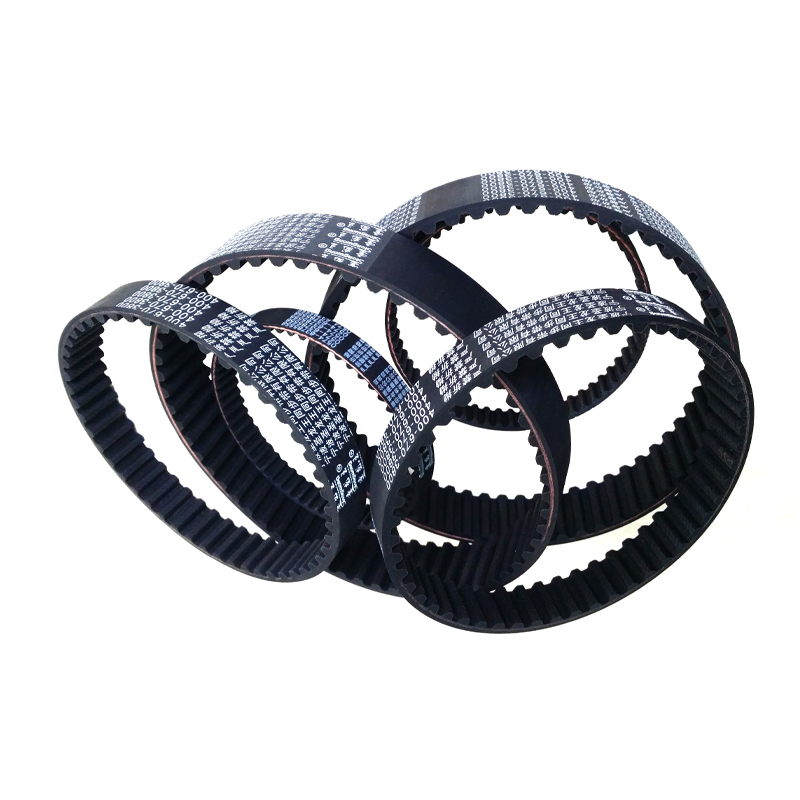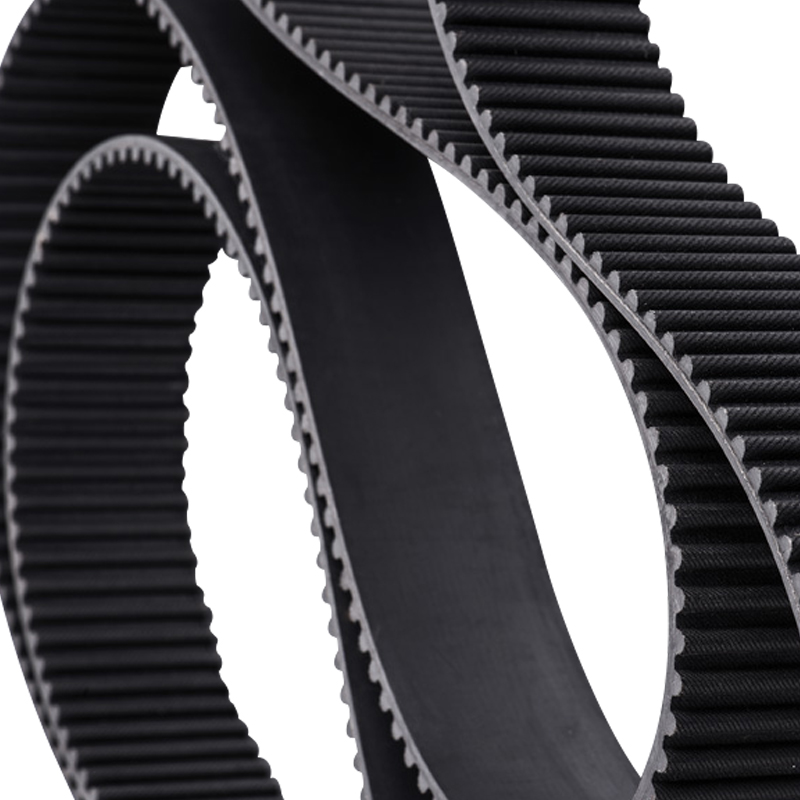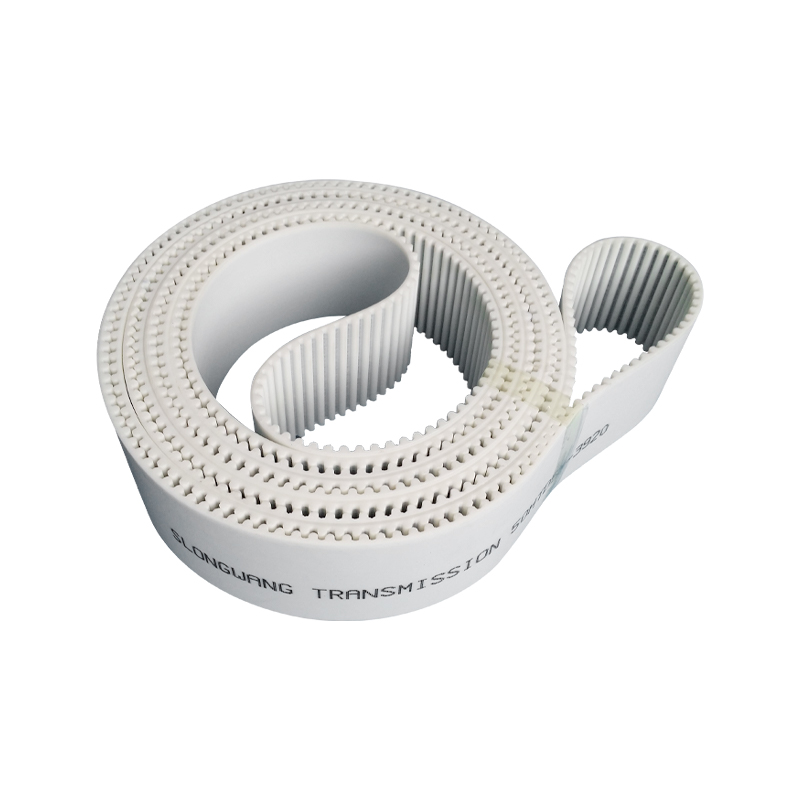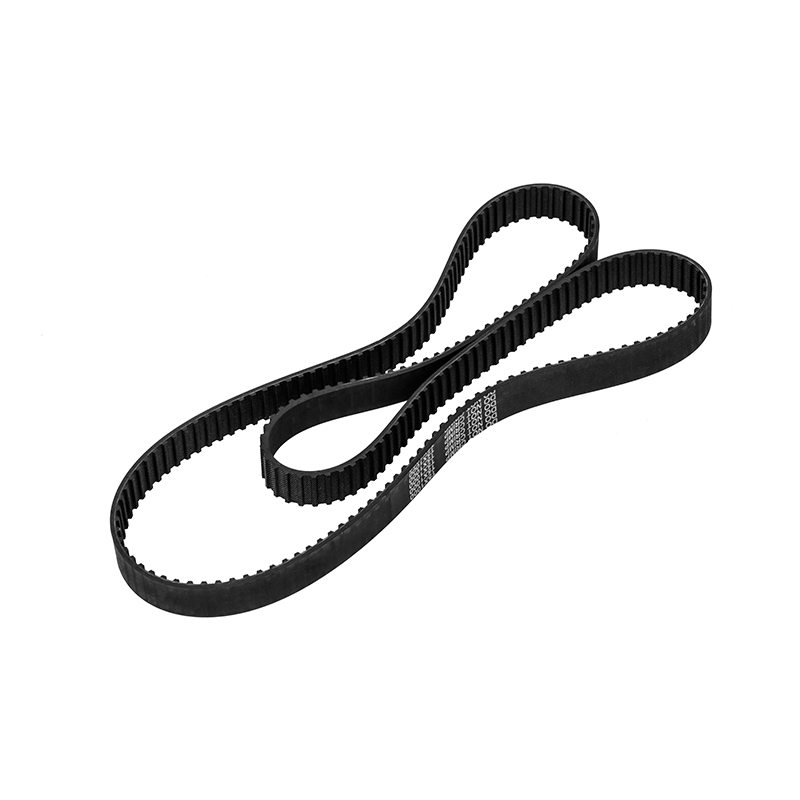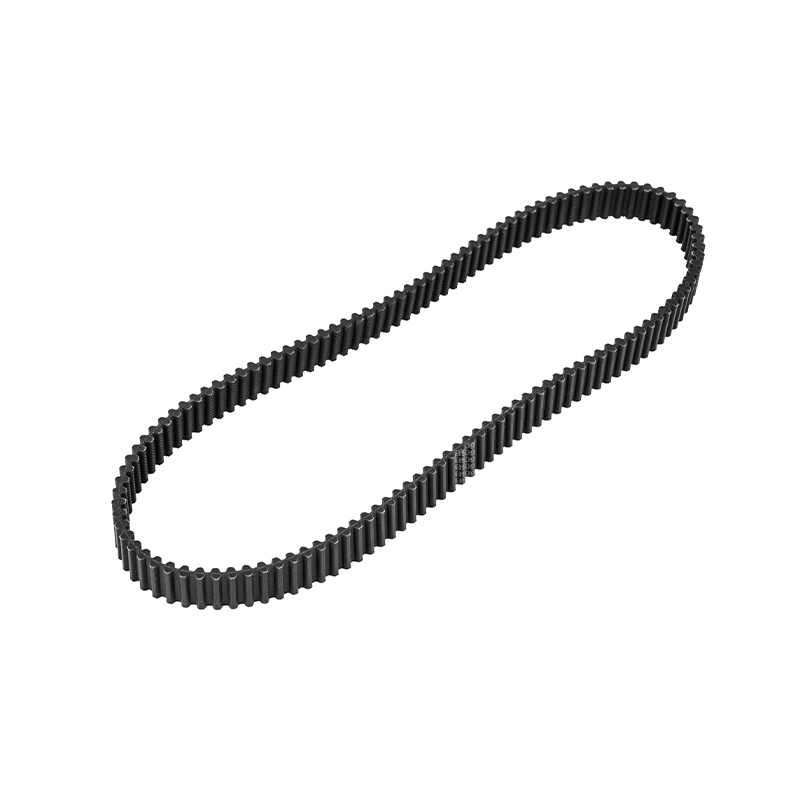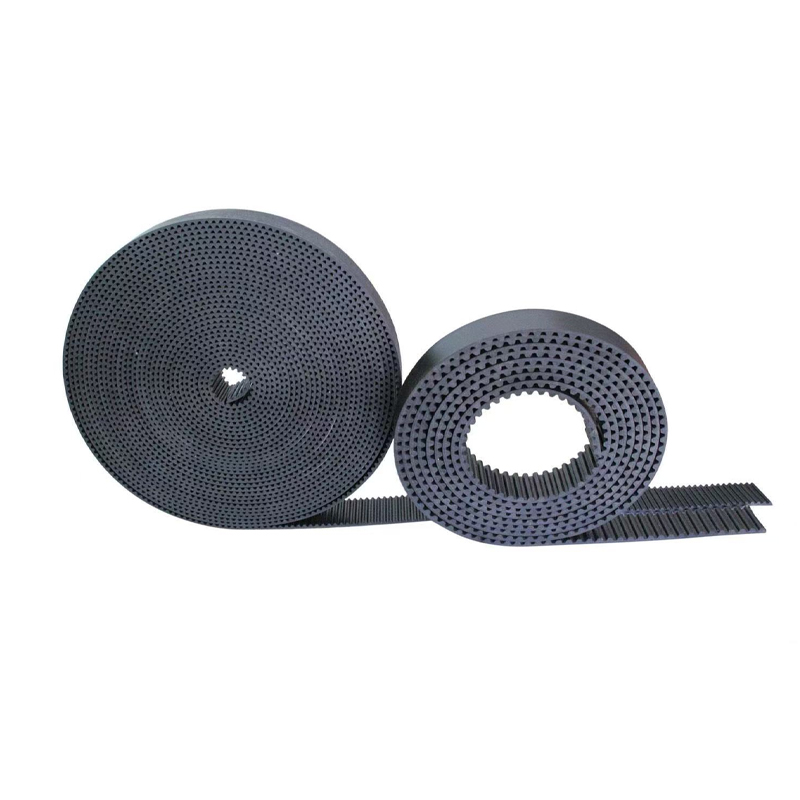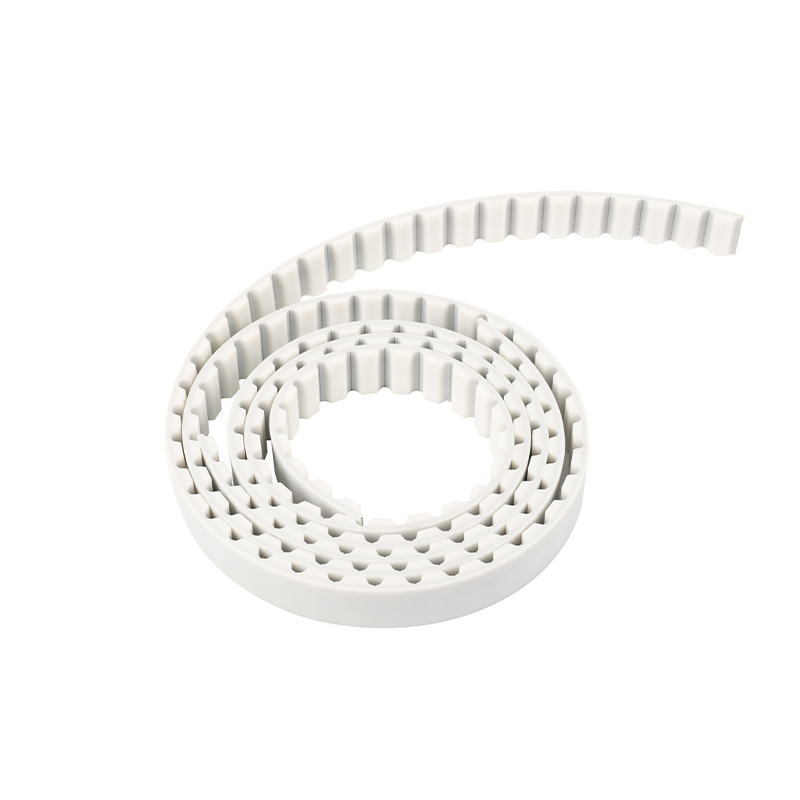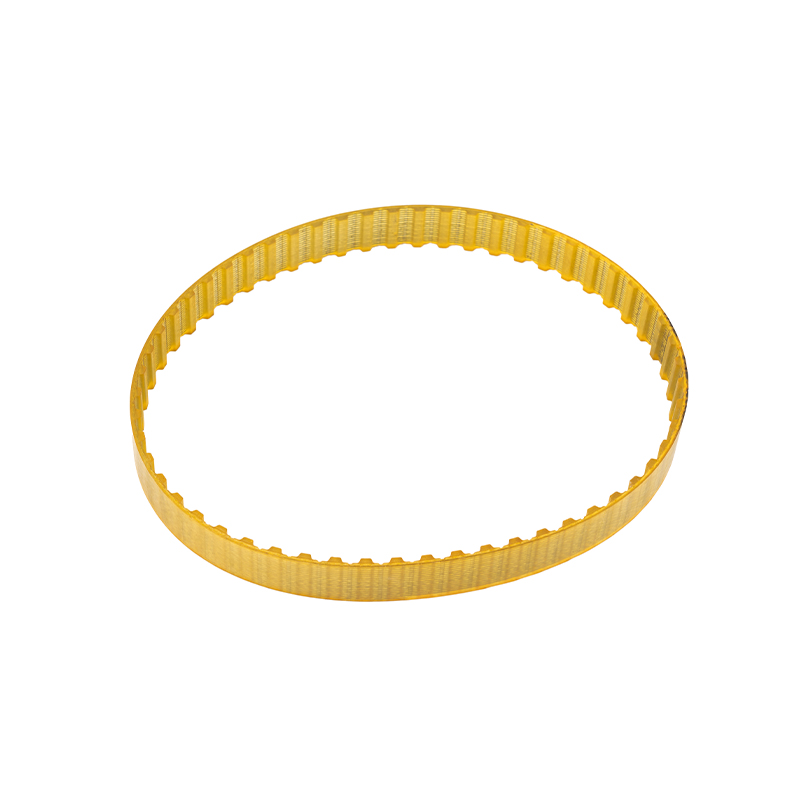Overview, characteristics, and applications of synchronous belts?
2025-01-25
1、 Overview of synchronous belt: Synchronous belt transmission is composed of a circular belt with equidistant teeth on its inner surface and corresponding matching wheels. It combines the advantages of belt drive, chain drive, and gear drive. When rotating, power is transmitted through the meshing of teeth with the grooves of the wheel. Synchronous belt transmission for transmission has an accurate transmission ratio, no-slip, can achieve constant speed ratio, smooth transmission, vibration absorption, low noise, and a wide range of transmission ratios, generally up to 1:10. Allow a line speed of up to 50M/S and transmit power from a few watts to hundreds of kilowatts. High transmission efficiency, generally up to 98%, compact structure, suitable for multi-axis transmission, no lubrication required, no pollution, so it can work normally in places where pollution is not allowed and the working environment is relatively harsh.
2、 Characteristics of synchronous belts: 1. Accurate transmission, no sliding during operation, and constant transmission ratio; 2. Smooth transmission, with buffering and damping capabilities, and low noise; 3. High transmission efficiency, up to 0.98, with significant energy-saving effect; 4. The speed ratio range is large, generally up to 10, and the linear speed can reach 50m/s. It has a large power transmission range, ranging from a few watts to several hundred kilowatts; 5. Can be used for long-distance transmission, with a center distance of up to 10m or more; 6. Compared to V-belt conveyors, the preload is smaller and the load on the shaft and bearings is smaller.
3、 The application of synchronous belts: Synchronous belts are widely used in light industry, textile, and CNC machine tools. Various types of mechanical transmissions in industries such as tobacco, communication cables, chemicals, metallurgy, precision instruments, industrial robots, food, mining, automobiles, and petroleum.


 English
English 中文简体
中文简体